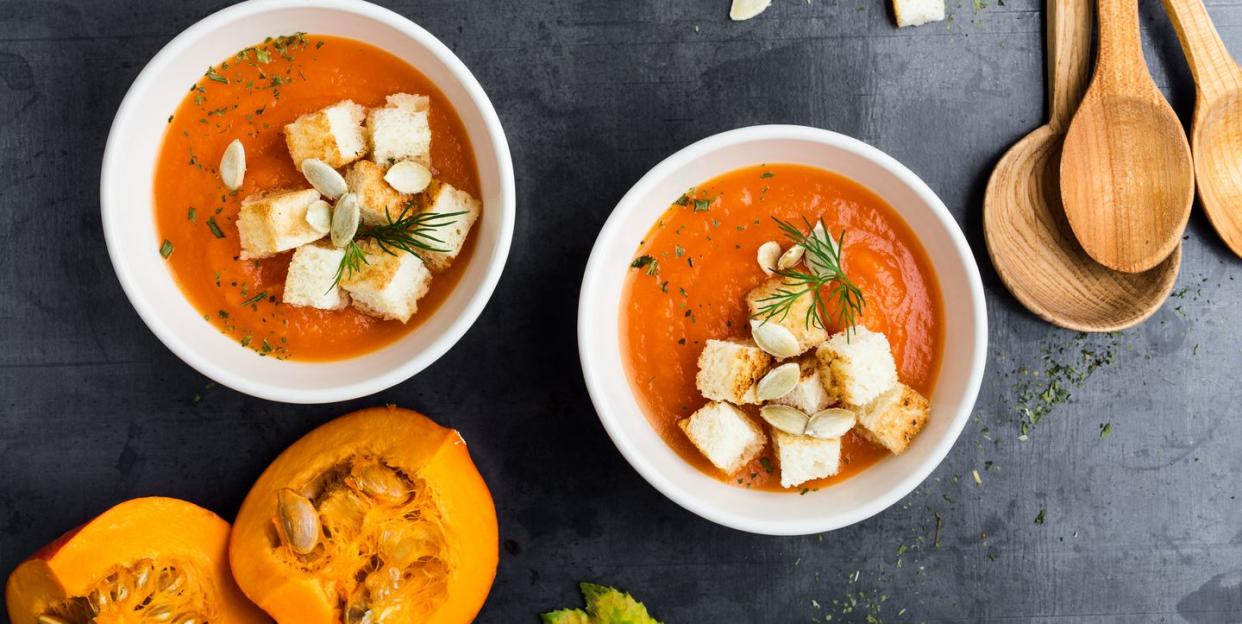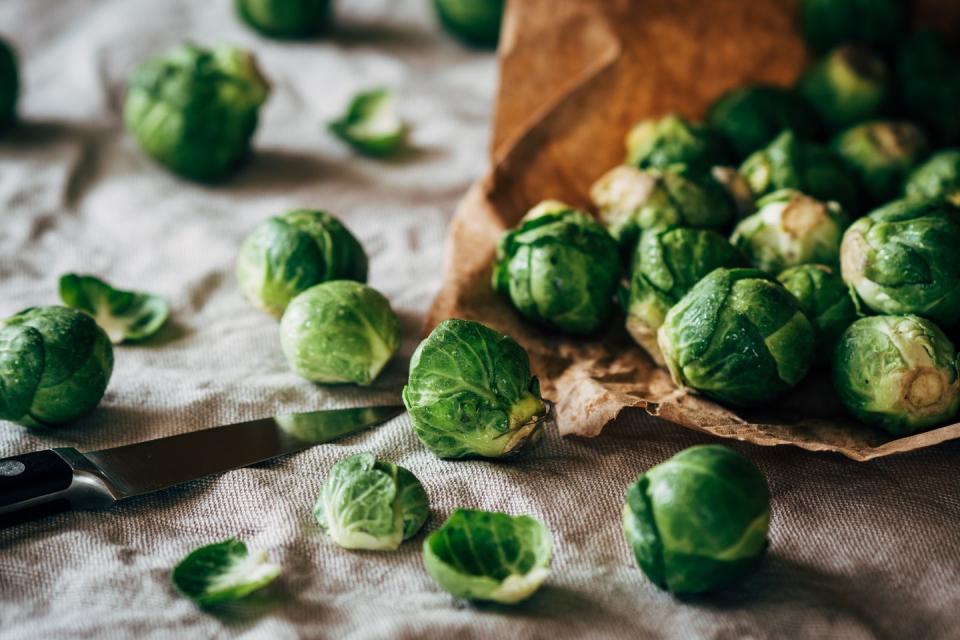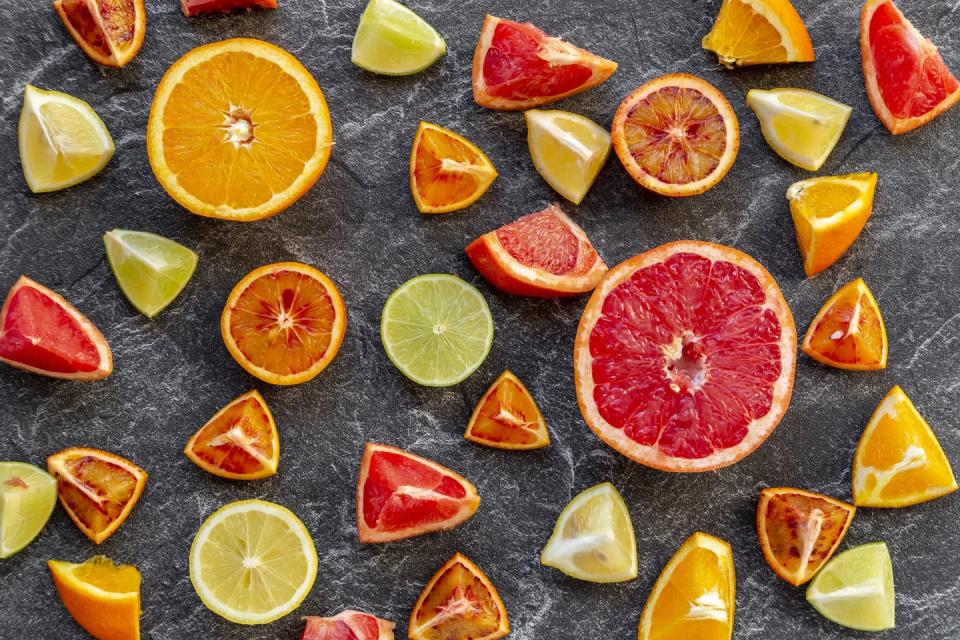You're Probably Making These 6 Winter Fueling Mistakes

For many athletes, summer fueling is pretty straightforward: we load up with cold smoothies, water-laden produce, and salty snacks; we let sweat and thirst cues guide our hydration; and we build our plates with a rainbow of in-season foods.
Winter, on the other hand, presents more challenges for those of us logging consistent workouts. Our produce options are more limited, many refueling standbys are as cold as our core temperatures, and drinking takes some effort when we don’t feel as parched.
As we approach winter’s midpoint, it’s a good time to check in on our fueling habits and make tweaks where needed. Two registered dietitians—Maddie Alm and Sakiko Minagawa—share six common errors that athletes make this time of year, with actionable ideas for correcting each one.
[Find 52 weeks of tips and motivation, with space to fill in your mileage and favorite routes, with the Bicycling Training Journal.]
The problem: We run low on Vitamin D.

According to Maddie Alm, owner of Fueling Forward Sports Nutrition in Boulder, Colorado, vitamin D deficiencies are common among athletes in winter. Shorter days and colder temperatures mean less exposure to vitamin D-producing sunlight. And while the vitamin is well known for its association with bone health, Alm explains that it also plays a role in immune system functioning, digestive health, and even mood.
The fix: Eat more vitamin D-rich foods (shoot for 600 IU per day), get routine bloodwork, and catch some rays.
Good sources of the vitamin include milk, yogurt, cottage cheese, tuna, salmon, egg yolk, and mushrooms. Some cereals and orange juices are also vitamin D-fortified. For reference, 3 ounces of salmon contain 450 IU, 1 cup of cow’s milk contains 180 IU, 1 large egg yolk contains 40 IU, and 1 cup of fortified cereal contains 40 IU.
It’s a good idea, Alm adds, to check your levels through blood work in a lab once or twice a year and to consult a professional if your numbers come back low. If you have a hard time hitting that daily quota through food alone, you may be a good candidate for vitamin D supplementation. Finally, while not a dietary fix, getting regular doses of sunshine is also important.
The problem: We underhydrate.
To be clear: “Even when it’s cold, you still sweat,” says Sakiko Minagawa, an Olympic Marathon Trials qualifier and the owner of Peak Performance Sports Nutrition, also in Boulder. So even though we may not end our workouts with cotton mouths and sweat-soaked clothes, it’s still critical that we stay on top of pre- and post-ride fluid replenishment.
The fix: Keep a reusable water bottle handy and reimagine your hydration sources.
Minagawa suggests carrying around a reusable water bottle so you remember to drink throughout the day.
If you have a hard time filling up on cold water, keep in mind that there are other sources of hydration—like fresh fruits and vegetables, soups, broths, and anything else you can sip on. Some of Alm’s favorite winter drinks, which double as recovery fuel, include hot chocolate, mochas, and bone broth. She also makes water infusions at home by adding flavor enhancers (try cucumber and mint, or lemon and basil) to water bottles or pitchers and chilling them overnight.
The problem: We fail to capitalize on in-season produce.

Although we can now get almost any food at any time of the year, eating seasonally offers many benefits. In-season produce, Alm says, is fresher, more nutrient-dense, cheaper, and more environmentally friendly if it hasn’t traveled long distances to reach your plate. Taking advantage is just a matter of knowing what’s in and how to prepare it.
The fix: Shop for dark, leafy greens, root vegetables, and citrus fruits.
Alm concedes that winter is more of a transition period than a time of bountiful harvest—but there are still some seasonal staples worth keeping on your grocery list. These include grapefruit, clementines, pomegranate, kiwi, squash, brussels sprouts, sweet potatoes, pears, kale, and cabbage. Even if these foods don’t make up the bulk of your diet, increasing your intake will do your body good.
The problem: We don’t consume enough vitamin C.

Vitamin D isn’t the only overlooked vitamin this time of year. As Minagawa explains, vitamin C (also called ascorbic acid) impacts immune health as well as growth and tissue repair. “It may not prevent you from getting sick,” she says, “but some research shows vitamin C may decrease the duration of cold symptoms.”
The fix: Up your consumption of foods with vitamin C, such as citrus fruits, greens, and strawberries. Aim for 75 mg (for women) or 90 mg (for men) per day.
Unsurprisingly, many foods on the in-season list are also high in vitamin C: citrus fruits and dark, leafy greens, for example. Bell peppers and strawberries are good sources, too—about 210 mg in one large red or orange bell pepper, and 90 mg in a cup of raw strawberry halves, each of which achieves the recommended daily allowance. To see how other foods stack up, use the FoodData Central search on the U.S. Department of Agriculture’s site.
Because vitamin C helps with iron absorption, Minagawa suggests pairing the two when possible, in meals such as a spinach salad with strawberries, an omelet with spinach and red bell pepper, or a tomato soup with lentils or black beans.
The problem: We don’t adjust our food intake alongside our training.
Tough conditions, scant daylight hours, and limited races make winter a convenient time for many athletes to dial back their training. While regular resets are beneficial over the long haul, Minagawa warns that a decreased training load will naturally lead to some weight gain if your nutritional habits don’t change too.
The fix: Maintain an exercise routine and make sure your nutrition matches your activity level.
Minagawa encourages athletes to continue to exercise through the winter season, even if that means swapping some rides for swims or elliptical sessions. “Find ways to stay motivated,” she adds, by recruiting friends to meet you for frosty workouts or easy-to-skip trainer sessions.
Building a spring racing schedule can also hold you accountable to your goals and the consistency they require. However you change your normal workout routine, let your food intake fluctuate in conjunction.
The problem: We overcompensate.
If you find yourself feeling sluggish this time of year because it’s after the holidays or your training isn’t consistent, it can be tempting to repent with cleanses, detoxes, and extreme exercise regimens. But such quick fixes rarely pay off in the long run, Alm warns, as they put you at risk for injury, burnout, and subpar seasons to come.
The fix: Allow your body to normalize gradually by resuming a wholesome diet.
Unless you’re preparing for a key race in the winter or early spring, Alm suggests not stressing. Just like returning from an injury or a break from working out, your body will naturally find its sweet spot if you slowly ramp up your training and gravitate to fruits, vegetables, whole grains, and lean protein. “Trust the process and don’t panic,” Alm advises. “Be okay not being at your leanest year-round.”
You Might Also Like